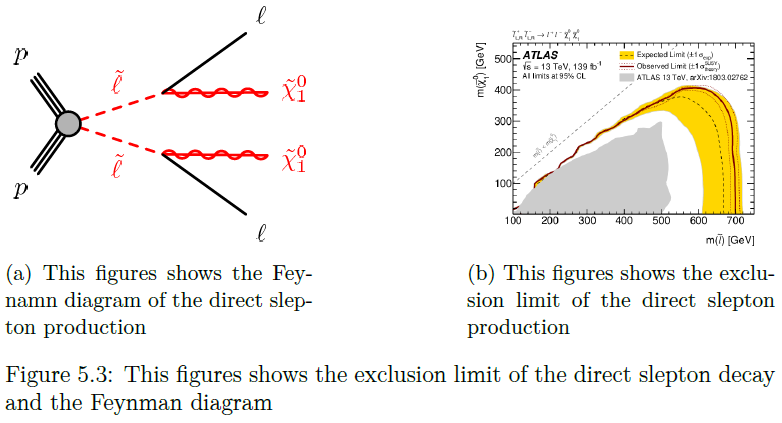Abstract
The Standard Model (SM) accounts for about 5 % of the known univers, and can not explain gravity, the hierarchy problem or the matter-antimatter asymmetry in the univers. Supersymmetry is a new symmetry which aim to bridge the gap between the SM and the unanswered questions. This analysis studies production of Supersymmetric particles using data from the ATLAS detector at the Large Hadron Collider at CERN taken at √s = 13 TeV. In particular, three decay models of electroweak production of charginos and sleptons decaying into final states with two leptons and missing trans- verse momentum are studied. The effect of different isolation point combinations are tested and the expected significance calculated. It is found that the different isolation point combination has little effect on the total amount of background in the signal regions, but have a large effect on the fake and non-prompt sample, with one of the combination tested in this analysis being better than the others.
